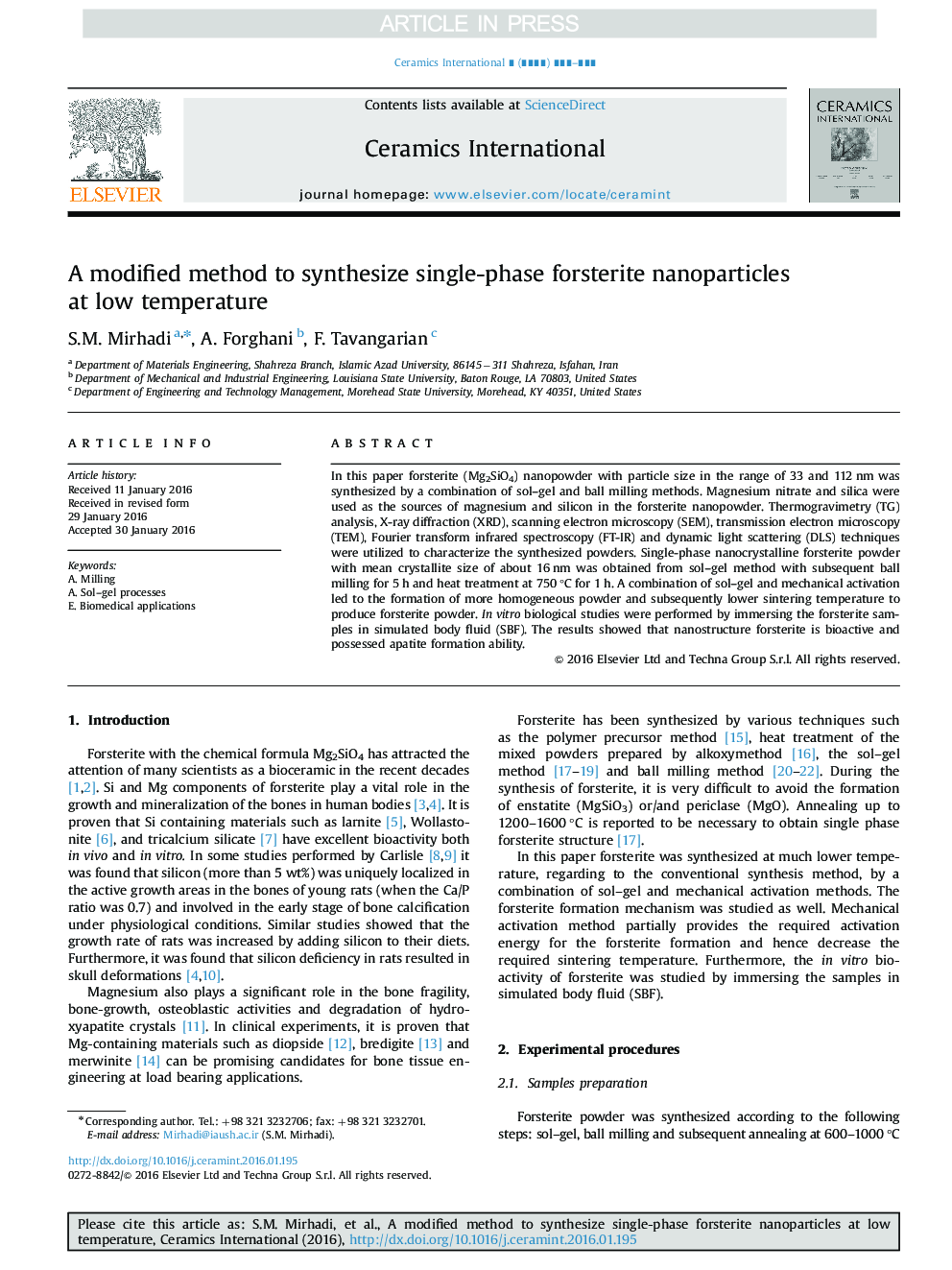| Article ID | Journal | Published Year | Pages | File Type |
|---|---|---|---|---|
| 10624129 | Ceramics International | 2016 | 6 Pages |
Abstract
In this paper forsterite (Mg2SiO4) nanopowder with particle size in the range of 33 and 112 nm was synthesized by a combination of sol-gel and ball milling methods. Magnesium nitrate and silica were used as the sources of magnesium and silicon in the forsterite nanopowder. Thermogravimetry (TG) analysis, X-ray diffraction (XRD), scanning electron microscopy (SEM), transmission electron microscopy (TEM), Fourier transform infrared spectroscopy (FT-IR) and dynamic light scattering (DLS) techniques were utilized to characterize the synthesized powders. Single-phase nanocrystalline forsterite powder with mean crystallite size of about 16 nm was obtained from sol-gel method with subsequent ball milling for 5 h and heat treatment at 750 °C for 1 h. A combination of sol-gel and mechanical activation led to the formation of more homogeneous powder and subsequently lower sintering temperature to produce forsterite powder. In vitro biological studies were performed by immersing the forsterite samples in simulated body fluid (SBF). The results showed that nanostructure forsterite is bioactive and possessed apatite formation ability.
Related Topics
Physical Sciences and Engineering
Materials Science
Ceramics and Composites
Authors
S.M. Mirhadi, A. Forghani, F. Tavangarian,
